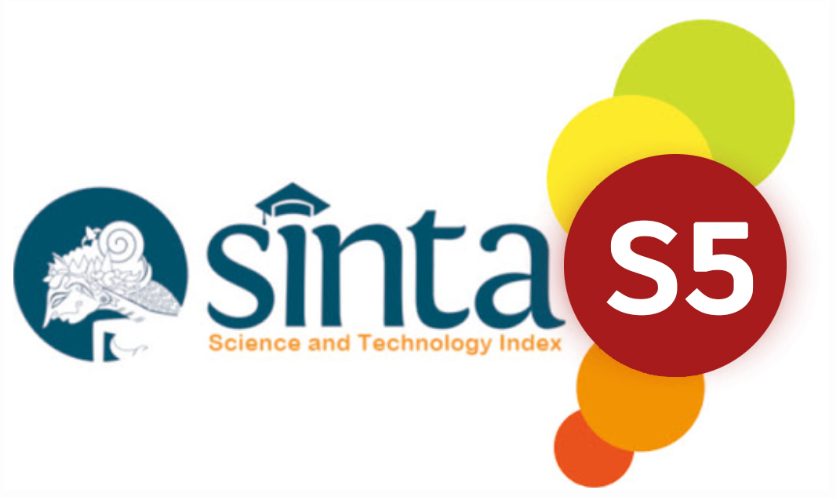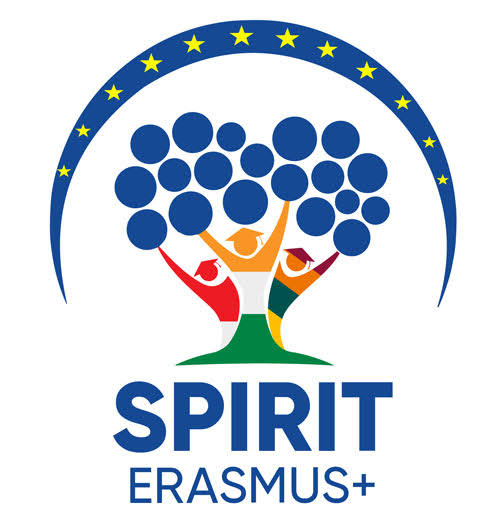A Natural Food Colourant from Dioscorea alata (Dandila) in Sri Lanka: Development, Storage Stability and Bio-active Properties
DOI:
https://doi.org/10.32734/sumej.v7i2.15784Keywords:
anthocyanin, bio-active properties, dandila, dioscorea alata, encapsulation, microwave-assistedAbstract
Background: Though anthocyanins are popular as natural food colourants with additional functional properties, their instability limited their utilization in the industry. Objective: this study aimed to formulate a natural food colourant by the microwave-assisted encapsulation of Dandila (Dioscorea alata) anthocyanins to enhance the storage stability of the pigments in ambient conditions and to study the storage stability and the bio-active properties of the formulated colourant. Methods: This was an in vitro study, the steps were acidified water was used as the solvent to extract the anthocyanins from Dandila yams. The colourant formulation encapsulated with maltodextrin (30 mg/ml) was selected as the best encapsulation treatment for Dandila anthocyanin. Anthocyanin degradation was not significant during the tested 12 months of storage period. Results: Noteworthy values were obtained for Total Phenolic Content and anti-oxidant activity. Among the tested strains in the antimicrobial assay, the natural colourant showed inhibitory activities against Escherichia coli and Streptococcus pneumoniae. Conclusions: confirm the successful development of a natural colourant rich in bio-active properties from Dandila anthocyanin while ensuring its storage stability in ambient conditions.
Downloads
References
Miyata R, Sano H, Kumazawa S. New acylated anthocyanin isolated from purple yam using molecular networking analysis. Food Sci Technol Res. 2022;28(4):329–34. Available from: https://doi.org/10.3136/fstr.fstr-d-22-00025.
Srivichai S, Hongsprabhas P. Profiling Anthocyanins in Thai Purple Yams (Dioscorea alata L.). Int J Food Sci. 2020;2020:1–10. Available from: https://doi.org/10.1155/2020/1594291.
De Pascual-Teresa S, Sanchez-Ballesta MT. Anthocyanins: from plant to health. Phytochem Rev. 2007;7(2):281–99. Available from: https://doi.org/10.1007/s11101-007-9074-0.
Husna NE, Novita M, Rohaya S. Anthocyanins content and antioxidant activity of fresh purple fleshed sweet potato and selected products. AGRITECH. 2013;33(3):296–302.
Kent K, Charlton KE, Netzel M, Fanning K. Food-based anthocyanin intake and cognitive outcomes in human intervention trials: a systematic review. J Hum Nutr Diet. 2016;30(3):260-74. Available from: https://doi.org/10.1111/jhn.12431.
Frank K, Kohler K, Schuchmann HP. Stability of anthocyanins in high pressure homogenisation. Food Chem. 2012;130(3):716–9. Available from: https://doi.org/10.1016/j.foodchem.2011.07.086.
Tan C, Dadmohammadi Y, Lee MC, Abbaspourrad A. Combination of copigmentation and encapsulation strategies for the synergistic stabilization of anthocyanins. Compr Rev Food Sci Food Saf. 2021;20(4):3164–91. Available from: https://doi.org/10.1111/1541-4337.12772.
Nhon HTN, et al. Enhancement of extraction effectiveness and stability of anthocyanin from Hibiscus sabdariffa L. J Agric Food Res. 2022;10:100408. Available from: https://doi.org/10.1016/j.jafr.2022.100408.
Ochoa S, Osorio-Tobón JF. Isolation and Characterization of Starch from the Purple Yam (Dioscorea alata) Anthocyanin Extraction Residue Obtained by Ultrasound-Assisted Extraction. Waste Biomass Valorization. 2023. Available from: https://doi.org/10.1007/s12649-023-02155-y.
Idham Z, Muhamad II, Sarmidi MR. Degradation kinetics and color stability of spray-dried encapsulated anthocyanins from Hibiscus sabdariffa L. J Food Process Eng. 2011;35(4):522–42. Available from: https://doi.org/10.1111/j.1745-4530.2010.00605.x.
Sipahli S. Identification, characterization and application of a natural food colourant from Hibiscus sabdariffa [dissertation]. Durban (South Africa): Durban University of Technology; 2017.
Salawu SO, Ajiboye PB, Akindahunsi AA, Boligon AA. Antioxidant and anticholinesterase potential of two Nigerian bitter yams using a simulated gastrointestinal digestion model and conventional extraction. Prev Nutr Food Sci. 2017;22(2):107–17.
Pap N, et al. Microwave-Assisted Extraction of Anthocyanins from Black Currant Marc. Food Bioprocess Technol. 2012;6(10):2666–74. Available from: https://doi.org/10.1007/s11947-012-0964-9.
Kaderides K, Papaoikonomou L, Serafim M, Goula AM. Microwave-assisted extraction of phenolics from pomegranate peels: Optimization, kinetics, and comparison with ultrasounds extraction. Chem Eng Process. 2019;137:1–11. Available from: https://doi.org/10.1016/j.cep.2019.01.006.
Jafari SM, Khazaei KM, Assadpour E. Production of a natural color through microwave-assisted extraction of saffron tepal's anthocyanins. Food Sci Nutr. 2019;7(4):1438-45. Available from: https://doi.org/10.1002/fsn3.978.
Padzil AM, Aziz AA, Muhamad II. Physicochemical properties of encapsulated purple sweet potato extract; Effect of maltodextrin concentration, and microwave drying power. Malays J Anal Sci. 2018;22(4).
Ahmad F, Jusoh YMM, Zaidel DNA, Jusoh M, Zakaria ZY, Muhamad II. Optimisation of microwave-assisted encapsulation of black mulberry (Morus nigra) extract. Chem Eng Trans. 2020;78:145–50. Available from: https://doi.org/10.3303/cet2078025.
Md Zaki NA, et al. Effects of microwave power and carrier materials on anthocyanins, antioxidants, and total phenolic content of encapsulated Clitoria ternatea flower extract. Pertanika J Sci Technol. 2023;31(5):2291–302.
Marsin AM, Jusoh YMM, Zaidel DNA, Hashim Z, Yusof AHM, Muhamad II. Microwave-assisted encapsulation of blue pea flower (Clitoria ternatea) colourant: maltodextrin concentration, power, and time. Chem Eng Trans. 2020;78:199–204. Available from: https://doi.org/10.3303/cet2078034.
Liew S, Zin ZM, Maidin NM, Mamat H, Zainol MK. Effect of the different encapsulation methods on the physicochemical and biological properties of Clitoria ternatea flowers microencapsulated in gelatine. Food Res. 2020;4(4):1098–108. Available from: https://doi.org/10.26656/fr.2017.4(4).033.
Zhao H, Chen B, Zhang C, Cai Y, Ding Y, Li X, et al. In-vitro free radical scavenging activities of anthocyanins from three berries. J Med Plants Res. 2012;6(1). Available from: https://doi.org/10.5897/jmpr11.1171.
Ersus S, Yurdagel Ü. Microencapsulation of anthocyanin pigments of black carrot (Daucus carota L.) by spray drier. J Food Eng. 2007;80(3):805–12. Available from: https://doi.org/10.1016/j.jfoodeng.2006.07.009.
Mansour M, Salah M, Xu X. Effect of microencapsulation using soy protein isolate and gum arabic as wall material on red raspberry anthocyanin stability, characterization, and simulated gastrointestinal conditions. Ultrason Sonochem. 2020;63:104927. Available from: https://doi.org/10.1016/j.ultsonch.2019.104927.
Raharjo S, Purwandari FA, Hastuti P, Olsen K. Stabilization of black rice (Oryza sativa, L. indica) anthocyanins using plant extracts for copigmentation and maltodextrin for encapsulation. J Food Sci. 2019;84(7):1712–20. Available from: https://doi.org/10.1111/1750-3841.14688.
Nthimole CT, Kaseke T, Fawole OA. Micro-Encapsulation and characterization of Anthocyanin-Rich raspberry juice powder for potential applications in the food industry. Processes. 2022;10(5):1038. Available from: https://doi.org/10.3390/pr10051038.
Azarpazhooh E, Sharayei P, Zomorodi S, Ramaswamy HS. Physicochemical and phytochemical characterization and storage stability of freeze-dried encapsulated pomegranate peel anthocyanin and in vitro evaluation of its antioxidant activity. Food Bioprocess Technol. 2018;12(2):199–210. Available from: https://doi.org/10.1007/s11947-018-2195-1.
Robert P, Gorena T, Romero N, Sepúlveda E, Chávez J, Sáenz C. Encapsulation of polyphenols and anthocyanins from pomegranate (Punica granatum) by spray drying. Int J Food Sci Technol. 2010;45(7):1386–94. Available from: https://doi.org/10.1111/j.1365-2621.2010.02270.x.
Roleira FMF, Varela C, Costa SC, Da Silva EJT. Phenolic derivatives from medicinal herbs and plant extracts: anticancer effects and synthetic approaches to modulate biological activity. Stud Nat Prod Chem. 2018;58:115–56. Available from: https://doi.org/10.1016/b978-0-444-64057-4.00004-1.
Murugan M, Mohan VR. In vitro antioxidant studies of Dioscorea esculenta (Lour). Burkill. Asian Pac J Trop Biomed. 2012;2(3):S1620–4. Available from: https://doi.org/10.1016/s2221-1691(12)60464-x.
Konczak I, Zhang W. Anthocyanins—More than nature’s colours. J Biomed Biotechnol. 2004;2004(5):239–40. Available from: https://doi.org/10.1155/s1110724304407013.
Blando F, Gerardi C, Nicoletti I. Sour Cherry (Prunus cerasus L) Anthocyanins as Ingredients for Functional Foods. J Biomed Biotechnol. 2004;2004(5):253–8. Available from: https://doi.org/10.1155/s1110724304404136.
Nakajima J, Tanaka I, Seo S, Yamazaki M, Saito K. LC/PDA/ESI-MS profiling and radical scavenging activity of anthocyanins in various berries. J Biomed Biotechnol. 2004;2004(5):241–7. Available from: https://doi.org/10.1155/s1110724304404045.
Azima AMS, Noriham A, Manshoor N. Anthocyanin content in relation to the antioxidant activity and colour properties of Garcinia mangostana peel, Syzigium cumini and Clitoria ternatea extracts. Int Food Res J. 2014;21(6):2369–75.
Jiao Y, Jiang Y, Wei-Wei Z, Yang Z. Studies on antioxidant capacity of anthocyanin extract from purple sweet potato (Ipomoea batatas L.). Afr J Biotechnol. 2012;11(27). Available from: https://doi.org/10.5897/ajb11.3859.
Khoo HE, Azlan A, Tang ST, Lim SM. Anthocyanidins and anthocyanins: colored pigments as food, pharmaceutical ingredients, and the potential health benefits. Food Nutr Res. 2017;61(1):1361779. Available from: https://doi.org/10.1080/16546628.2017.1361779.
Detering T, Berger RG. Formation of 2,6-DMBQ in anthocyanin-rich foods. LWT. 2020;134:110178. Available from: https://doi.org/10.1016/j.lwt.2020.110178.
Das B, Patel PK, Sobhapandit S, Gogoi RC. Screening and determination of anthocyanin in pigmented tea germplasm. Two Bud. 2016;63(1):1–3. Available from: https://www.researchgate.net/publication/307865224_Screening_and_determination_of_anthocyanin_in_pigmented_tea_germplasm.
Lacombe A, Wu VCH, Tyler S, Edwards KC. Antimicrobial action of the American cranberry constituents; phenolics, anthocyanins, and organic acids, against Escherichia coli O157:H7. Int J Food Microbiol. 2010;139(1–2):102–7. Available from: https://doi.org/10.1016/j.ijfoodmicro.2010.01.035.
Jeyaraj EJ, Lim YY, Choo WS. Antioxidant, cytotoxic, and antibacterial activities of Clitoria ternatea flower extracts and anthocyanin-rich fraction. Sci Rep. 2022;12(1). Available from: https://doi.org/10.1038/s41598-022-19146-z.
Downloads
Published
How to Cite
Issue
Section
License
Copyright (c) 2024 Sumatera Medical Journal

This work is licensed under a Creative Commons Attribution-ShareAlike 4.0 International License.
The Authors submitting a manuscript do so on the understanding that if accepted for publication, copyright of the article shall be assigned to Sumatera Medical Journal (SUMEJ) and Faculty of Medicine as well as TALENTA Publisher Universitas Sumatera Utara as publisher of the journal.
Copyright encompasses exclusive rights to reproduce and deliver the article in all form and media. The reproduction of any part of this journal, its storage in databases and its transmission by any form or media, will be allowed only with a written permission from Sumatera Medical Journal (SUMEJ).
The Copyright Transfer Form can be downloaded here.
The copyright form should be signed originally and sent to the Editorial Office in the form of original mail or scanned document.











